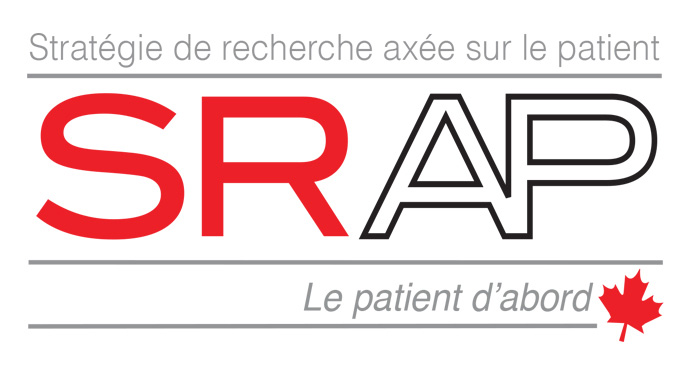This essay is part of a series of reflections on primary care during the pandemic presented by Réseau-1 Québec. The original essay published in French on September 24, 2020 is available here >>
It’s still too early to measure all the impacts of the unprecedented crisis we are experiencing. But one thing is certain, if we accept the reports coming from the front lines: clinical practice will no longer be the same. The transition to telemedicine, which took literally two weeks, will finally bring us, by all accounts, into the 21st century and make it possible to deploy connected health care and a variety of telediagnostic platforms. We are finally entering the modern era. We are also beginning to see the collateral damage of remote practice: missed diagnoses, segments of the population falling below the radar. Here I offer a few thoughts on what I know best—family medicine—but I believe they are applicable to primary care clinical practice in general.
Telemedicine and connected health, for what objectives and what types of decisions?
Clinicians paid on a contract or salary basis have long known that many small problems could, in fact, be solved remotely. It’s a bit ironic that people are only discovering this now. I used to end every consultation day with a half-hour of returning calls to manage minor problems for patients I knew well. But I would have gotten into a lot of trouble, even with patients I knew well, without all the information that an in-person visit provides—gait, gestures, facial expressions, moments of silence—from the greeting in the waiting room to the good-bye with the hand on the doorknob, and the “By the way, doctor, for a while now I’ve been having this chest pain when walking.” To explain the craze for telemedicine—which by the way is mostly audio (over the phone) rather than “tele-” (video)—we hear all sorts of things, such as this poorly understood quote that “80% of diagnoses are based on history,” invoked to assert that the phone is sufficient in the majority of cases. This is a mistaken understanding of the clinical process, so well described by Epstein 40 years ago. While it’s still true that 80% of the clinical process is based on history, most often it takes a physical examination and sometimes a few laboratory tests to capture the missing 20% in order to arrive at the right diagnosis. Of course, connected objects and tools derived from artificial intelligence will make us even more efficient at a distance. But the intellectual task required for the clinical process is excessively demanding and complex. It calls for acquiring several types of information and “processing” them—in the computing sense of the term—and then linking this information with scientific knowledge obtained from research to decide on the most probable diagnosis or prognosis and the treatment most likely to be effective. This involves not only identifying symptoms but also understanding the person and their context. Symptoms are more of a narrative than a precise set of data.
Telemedicine, connected objects, and diagnostic applications derived from artificial intelligence (AI) will be particularly useful for facilitating the monitoring of known problems, reducing diagnostic and therapeutic uncertainty, and bringing certain medical advances to more remote areas. But these advances will not relegate the medical visit to the back burner anytime soon. In fact, according to Eric Topol in his essay “Deep Medicine,” the main benefit of these advances should be to make healthcare more humane than ever by freeing up healthcare professionals to focus on what is essential to the practice of “good medicine”: listening, understanding the whole person, and being compassionate.
Reducing inequalities: access to primary care services as a factor in equity
COVID-19 also exposed the weak links in our health care system. One of these was the inability to lessen the impact of health inequalities. More than ever, COVID revealed and deepened inequalities. Inequalities in disease severity accentuated by the dangerous mix of co-morbidity, poverty, and precarious living conditions. Inequalities in access to non-COVID related care and the resurgence of diseases responsive to prevention and early treatment. Access to primary care services is a protective factor against health inequalities. Unfortunately, in Canada and in Quebec, there is strong evidence that less advantaged people have more difficulty accessing a family physician and that lower socio-economic status, older age, ethnic origin, and being female are more frequently associated with poorer quality preventive and curative services. As it is, many clienteles are unable to breach the fortresses that medical offices and health care institutions have sadly become. While the use of telemedicine will certainly help reduce certain geographic inequalities in access, there is a danger that this mode of practice will deepen inequalities by reducing access, already difficult, for the homeless, persons with mental health and addiction problems, the elderly, the less educated, and recent immigrants. It will take creative thinking to reach out to these people where they live, on the street, in their homes, and to find ways to make our practice environments welcoming to them. COVID-19 has already shown how courageous and inventive front-line practitioners can be. Some striking examples of this are projects supported by Réseau-1 (https://reseau1quebec.ca/projets/projets-sur-la-covid-19/) and the Foundation for the Advancement of Family Medicine (https://fafm.cfpc.ca/fr/programme-sci-covid-phaseone/).
Learning by doing: The importance of research in primary care
Paradoxically, the technological advances promoted by COVID-19 could have a deleterious impact if not used wisely, both clinically and in terms of problems they could create of unequal access to front-line services. So we need to learn from these practice transformations, in order to identify those that really add value and those that cause us to backslide. When I completed my master’s degree in epidemiology, my research director, Ms. Jacqueline Fabia, a great epidemiologist, gave me this advice, the importance of which I was slow to realize: “Keep good records. Important discoveries come from careful observation of practice. Your records are a mine of information.” Careful observation is also about measuring the impact of COVID and our new clinical and organizational practices from the patients’ perspective.
No, clinical practice should not continue as it was, and there must be no going back once the pandemic is over. But to truly move forward and take advantage of this unprecedented crisis, we need to return to the art of clinical practice and the value of research rooted in practice. This is the only way to learn “while building the plane.” Back to the Future.
Marie-Dominique Beaulieu, C.Q., M.D.,CMFC, M.Sc., FCMF, Professor Emeritus, Department of Family Medicine and Emergency Medicine, Université de Montréal









